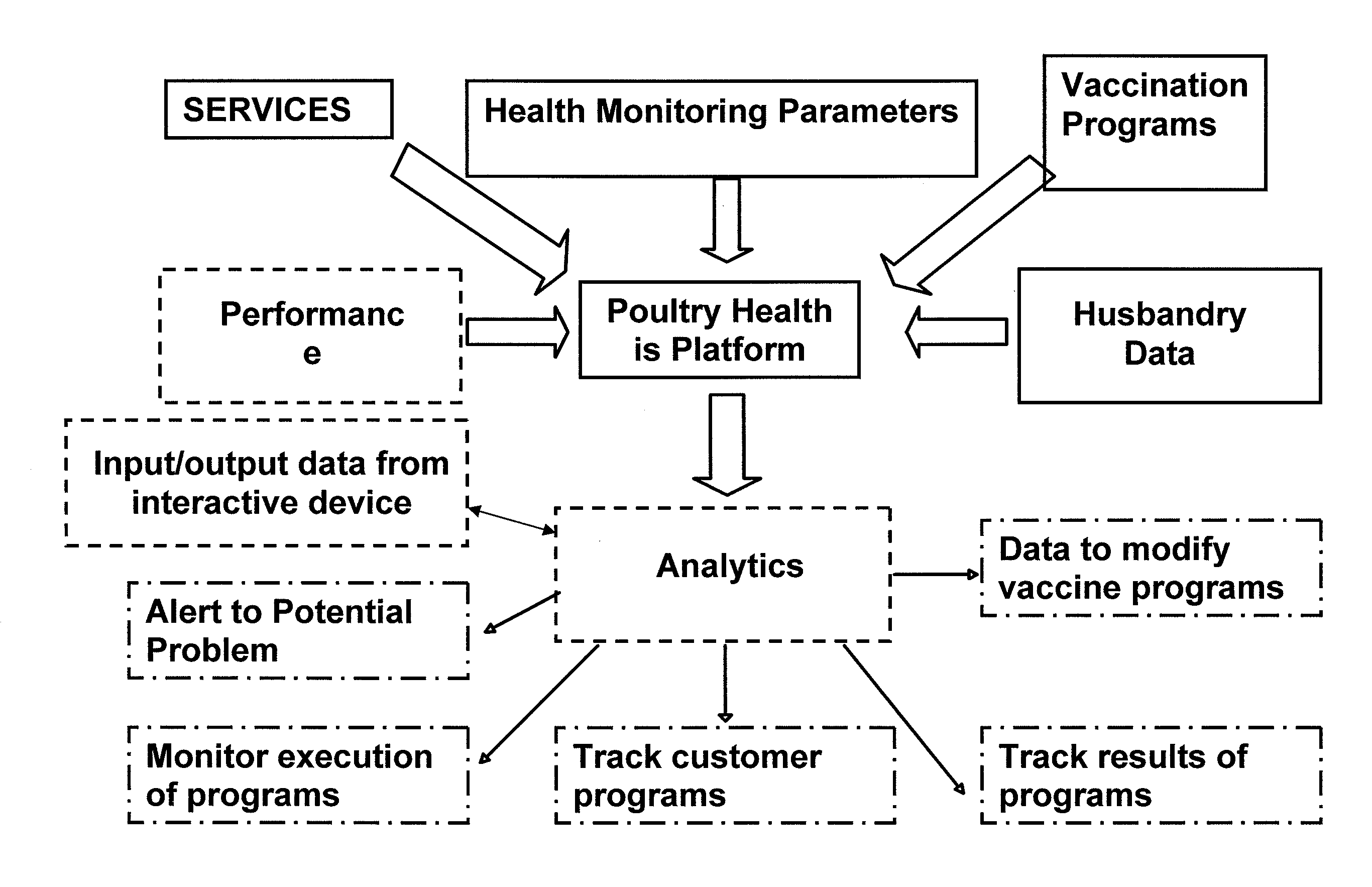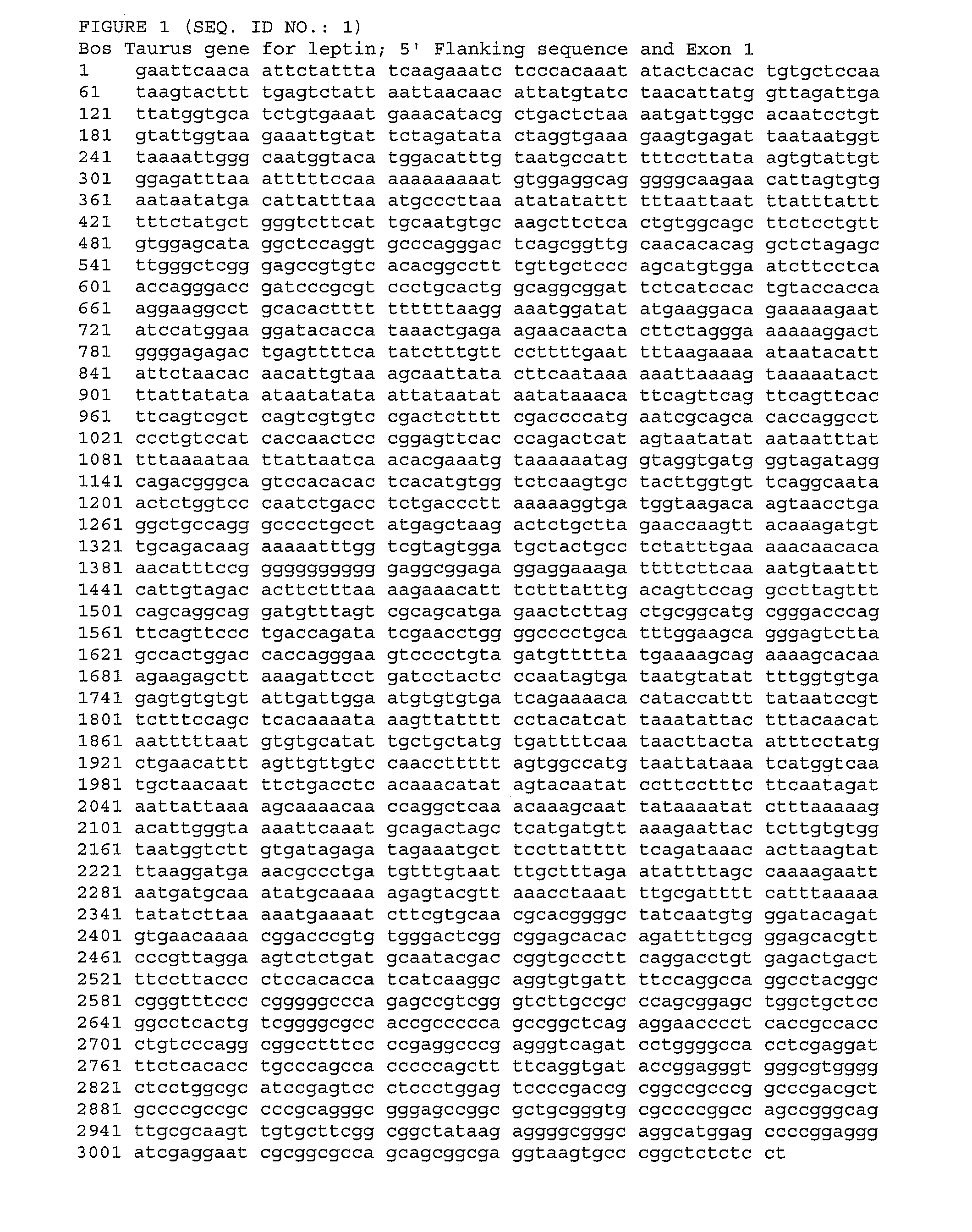Association of Single Nucleotide Polymorphisms, Dairy Form and Productive Life
a single nucleotide polymorphism and polymorphism technology, applied in biochemistry apparatus and processes, instruments, instruments, etc., can solve the problems of significant political and regulatory resistance to the introduction and use of such methodologies, and the non-inheritability of methodologies
- Summary
- Abstract
- Description
- Claims
- Application Information
AI Technical Summary
Benefits of technology
Problems solved by technology
Method used
Image
Examples
example 1
Leptin Marker Associations with Dairy Form
[0245]The Merial-Select Sires Dairy DNA repository was built with the following acquisitions: (1) 304 Select Sires bulls from 2004 sample (2) 278 Select Sires “large-family” or within family bulls (3) 359 Select Sires progeny test bulls—1997 to 2001; considered an unselected population (4) 28 Select Sires “random” or “across-family” bulls (5) 261 “broker” bulls for building the large / within- and across-family populations.
[0246]These 1,230 bulls were genotyped for the following markers in the leptin gene to evaluate their associations with production and type traits: (1) C207T SNP in the leptin gene promoter, denoted as UASMS1 (2) C528T SNP in the leptin gene promoter, denoted as UASMS2 (3) C1180T SNP in the leptin gene, denoted as Exon2-FB from University of Saskatchewan.
[0247]Three statistical models were used to analyze the data (as well as a goodness of fit test): (1) fixed genotype (2) allele substitution (3) haplotype.
[0248]Three differ...
example 2
[0267]FIG. 12 shows a flowchart of the input of data and the output of results from the analysis and correlation of the data pertaining to the breeding, veterinarian histories and performance requirements of a group of animals such as from bovines. The flowchart illustrated in FIG. 12 further indicate the interactive flow of data from the computer-assisted device to a body of students learning the use of the method of the invention and the correlation of such interactive data to present an output as a pie-chart indicating the progress of the class. The flowchart further indicates modifications of the method of the invention in accordance with the information received from the students to advance the teaching process or optimize the method to satisfy the needs of the students.
[0268]FIG. 13 illustrates potential relationships between the data elements to be entered into the system. Unidirectional arrows indicate, for example, that a house or shed is typically owned by on...
example 3
Productive Life
[0271]Productive life is time in the milking herd before removal by voluntary culling, involuntary culling, or death. Credits for each month in milk are obtained from standard lactation curves and are then summed across all lactations. Diminishing credits within lactation give cows more credit for beginning a new lactation than for continuing to milk in the previous lactation. Cows get 8 months credit for 305-d first lactation records, 10 months credit for second lactations, 10.2 months credit for third and later lactations, partial credits for shorter records, and extra credits for longer records. See, e.g., VanRaden, 2001. J. Dairy Sci. et al. 1993. J. Dairy Sci. 76:2758 and VanRaden et al. 2007. J. Dairy Sci. 90:2434.
[0272]The rationale for marker data analyses is if a genetic marker is a causal mutation or very closely linked to a causal mutation that affects a particular trait, then a significant difference is expected in the mean value for the trait between indi...
PUM
| Property | Measurement | Unit |
|---|---|---|
| pH | aaaaa | aaaaa |
| melting temperature | aaaaa | aaaaa |
| melting temperature | aaaaa | aaaaa |
Abstract
Description
Claims
Application Information
 Login to View More
Login to View More - R&D
- Intellectual Property
- Life Sciences
- Materials
- Tech Scout
- Unparalleled Data Quality
- Higher Quality Content
- 60% Fewer Hallucinations
Browse by: Latest US Patents, China's latest patents, Technical Efficacy Thesaurus, Application Domain, Technology Topic, Popular Technical Reports.
© 2025 PatSnap. All rights reserved.Legal|Privacy policy|Modern Slavery Act Transparency Statement|Sitemap|About US| Contact US: help@patsnap.com



